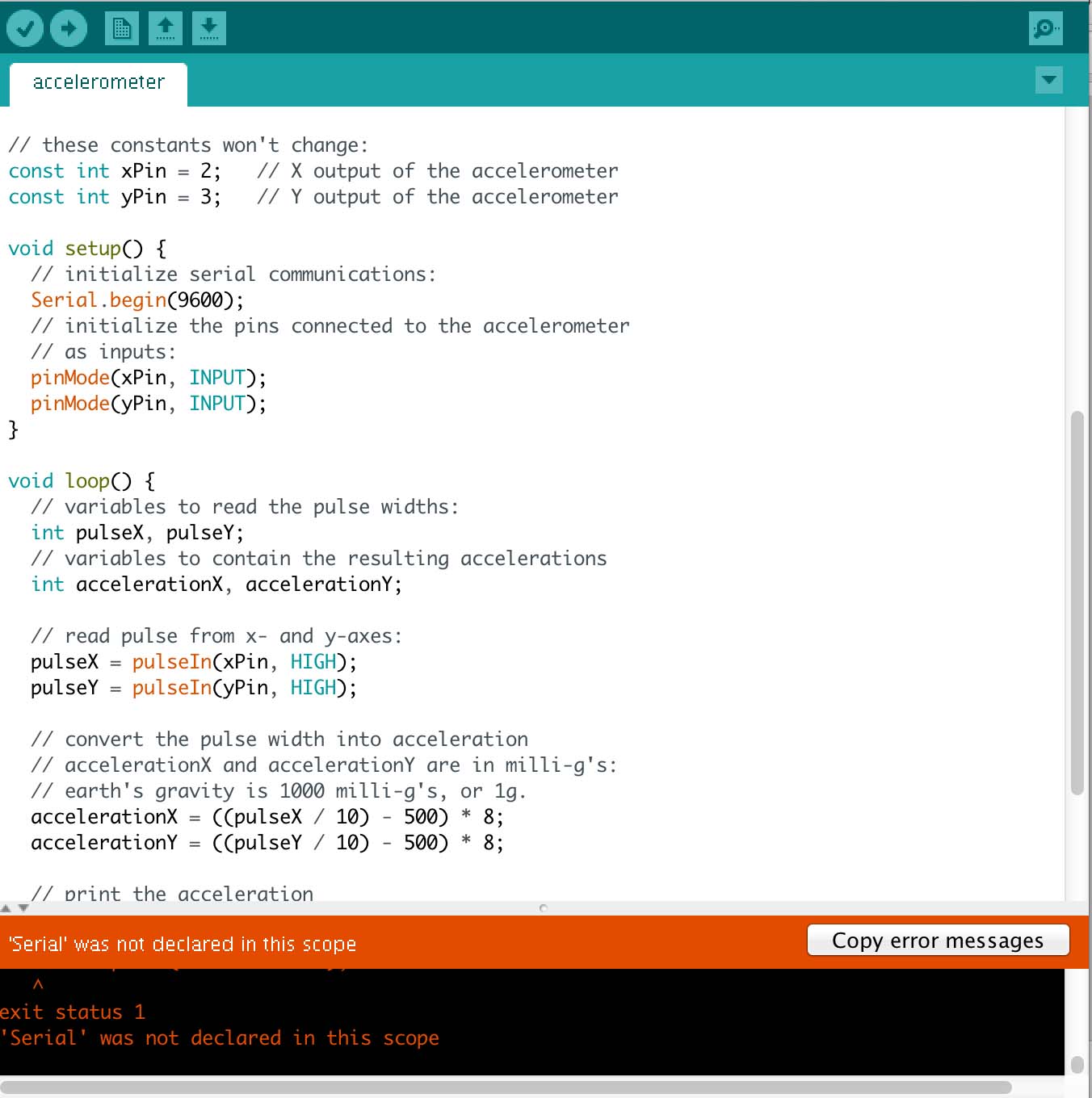

- PYTHON READ SERIAL DATA FROM ARDUINO INSTALL
- PYTHON READ SERIAL DATA FROM ARDUINO FULL
- PYTHON READ SERIAL DATA FROM ARDUINO CODE
#define cbi(sfr, bit) (_SFR_BYTE(sfr) &= ~_BV(bit))
PYTHON READ SERIAL DATA FROM ARDUINO CODE
While (time.time() - time0 < 5): # Read data for 5 secondsįor those interested, the (probably relevant) arduino code is simply: #define FASTADC 1 // Flag for prescale 16
PYTHON READ SERIAL DATA FROM ARDUINO FULL
Here's my full Python-end code: import serial For example, instead of "37\r\n" followed with "11\r\n", it will get "3\r11\r\n" or even "3711\r\n"! I am currently using pyserial's function readline() to read the data, but constantly see broken/missing bytes. import csv import serial Open com port ser serial.Serial ('COM4', 115200) with open ('datafile.csv', 'w') as newfile: csvwriter csv.writer (new. For this reason, we choose arbitrarily to stop reading after 10 lines. This will allow multiple digits to be sent as one numeric value.I have strings being continuously sent from my arduino.įor example, I am sending an integer (0-1023) line by line, so it should be: "51\r\n233\r\n37\r\n166\r\n"Īnd infinitely long as it is continuously streaming. In this case, since all the lines end with E, we don't have any way to know when to stop processing the lines.

For example, you could send the values like. This lets you run many tests inside the Serial Monitor without having to restart the Serial Monitor each time.Īs for your original problem, you should probably have some sort of data delimiters. Note that you can force a reset, just by setting the baud rate to 9600 (even if it is already 9600). This is a good thing because it gives you a fresh run each time. Bringing up the Serial Monitor forces a reset on the Arduino board. Make absolutely sure that the baud rate set inside the Serial Monitor exactly matches the baud rate in your sketch (9600 is a good choice in almost all cases). It will frequently be quite helpful if your sketch tries to send data back via Serial.print(). You can also type Ctrl-Shift-M to invoke the Serial Monitor. You can find the Serial Monitor under Tools in the IDE menu. First, try to run your Arduino sketch with the Serial Monitor a few times. Let me try to offer a few comments that might be helpful to other folks with similar problems (even though this problem has been solved). This also means that you'll be receiving a byte that is your number and not the ascii value of the number so you don't need to convert the read in line from a value to ascii. This is simply solved by using Serial.write instead of Serial.print in the the arduino sketch. for example, the number '10' comes in as a single '1' and '0'. However this causes another problem in that it prints individual digits. 48-55 are the ascii values for 1-9 so it's a matter of changing the python code to print the character not the value. Why isn't Python getting the correct values from the serial port? When I run the arduino serial terminal I get values that range from 0-179.

This output came from a straight, slow increase on the potentiometer, I never turned it down at any point. Here are your arduino and python codes, stripped to the minimum set of instructions to demonstrate. Then, in the serial monitor, enter an 's' and verify that you see the light on, light off messages. Serial.print(val) // print the value from the potentiometer Run your arduino IDE, upload your program to the arduino, and then under the Tool menu (in the IDE), set the com port and run the serial monitor. In addition, I have limited the scope of this post to just sending float and int data types since these 2 data types will be sufficient. Int oldVal = 0 // used for updating the serial print In this section, we will focus on sending data from the Arduino to the computer over a serial connection, and then plotting it with Python.We will use the data from a potentiometer as an example for the code below since it involves only a simple analogRead(). Int val = 0 // variable to store the value coming from the sensor write data: 1 read data: and it goes forever. However, when I launch the above Python script, my output is only the following: Starting Up Serial Monitor Exception: Opening serial port: Port is already open. To test my code, I used an Arduino to put some data on the serial port. I tried this on Putty and it works, returns distances up to 4 digits.
PYTHON READ SERIAL DATA FROM ARDUINO INSTALL
Print( str(count) + str( ': ' ) + str( line ) )Īrduino Code: int potpin = 0 // analog pin used to connect the potentiometer Python 3.x Matplotlib pyserial Arduino (or any programmable device with a serial port) Installing matplotlib and pyserial on Ubuntu 18 sudo apt-get install python3-matplotlib sudo apt-get install python3-serial Generating some fake serial data with an Arduino. I'm trying to read potentiometer values from an arduino using python.


 0 kommentar(er)
0 kommentar(er)
